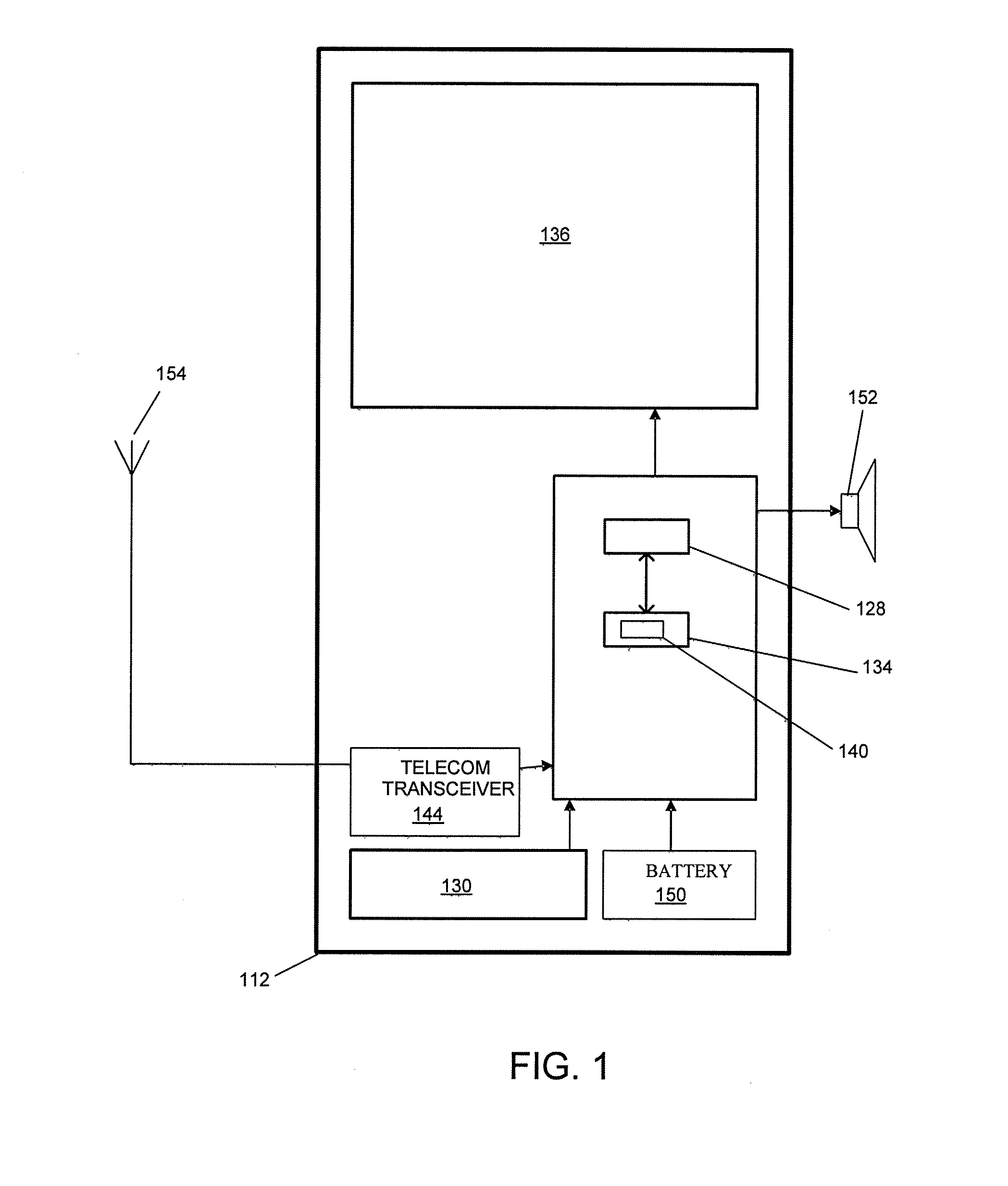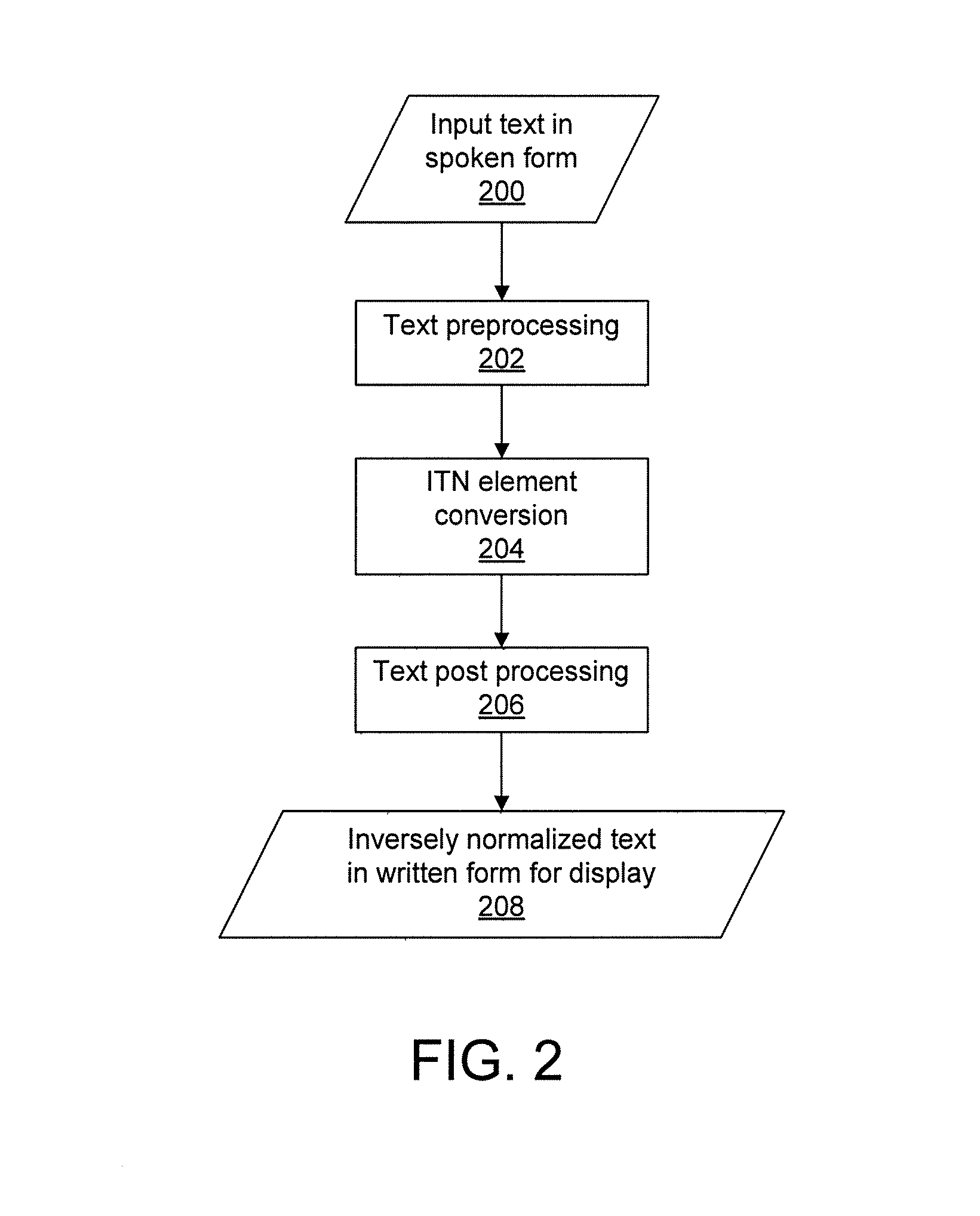Inverse Text Normalization
a text normalization and inverse text technology, applied in the field of speech recognition, can solve the problems that the inability of speech-recognition systems to produce acceptable textual output substantially reduces the usefulness of applications, especially in portable devices
- Summary
- Abstract
- Description
- Claims
- Application Information
AI Technical Summary
Benefits of technology
Problems solved by technology
Method used
Image
Examples
Embodiment Construction
[0018]In the following description of the various embodiments, reference is made to the accompanying drawings, which form a part hereof, and in which is shown by way of illustration various embodiments in which the invention may be practiced. It is to be understood that other embodiments may be utilized and structural and functional modifications may be made without departing from the scope and spirit of the present invention.
[0019]Certain embodiments are directed to efficient inverse text normalization that is configured for use in conjunction with a multilingual embedded speech-to-text dictation system that provides an improved user experience. For example, for a spoken form of: , the text after inverse text normalization may be:
[0020]Some embodiments are directed to a scheme for efficiently achieving inverse text normalization (ITN) that can be integrated into a multilingual embedded speech-to-text dictation system to significantly improve the user experience. Other embodiments ...
PUM
 Login to View More
Login to View More Abstract
Description
Claims
Application Information
 Login to View More
Login to View More - R&D
- Intellectual Property
- Life Sciences
- Materials
- Tech Scout
- Unparalleled Data Quality
- Higher Quality Content
- 60% Fewer Hallucinations
Browse by: Latest US Patents, China's latest patents, Technical Efficacy Thesaurus, Application Domain, Technology Topic, Popular Technical Reports.
© 2025 PatSnap. All rights reserved.Legal|Privacy policy|Modern Slavery Act Transparency Statement|Sitemap|About US| Contact US: help@patsnap.com



